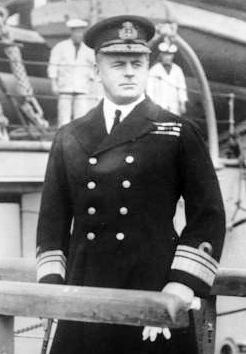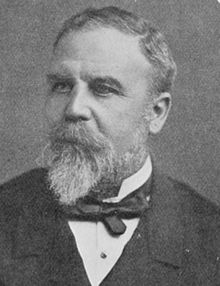
Duke of Somerset, from the county of Somerset, is a title that has been created five times in the peerage of England. It is particularly associated with two families: the Beauforts, who held the title from the creation of 1448, and the Seymours, from the creation of 1547, in whose name the title is still held. The present dukedom is unique, in that the first holder of the title created it for himself in his capacity of Lord Protector of the Kingdom of England, using a power granted in the will of his nephew King Edward VI.

The titles of Earl of Hertford and Marquess of Hertford have been created several times in the peerages of England and Great Britain.

Admiral Sir Hugh Francis Paget Sinclair,, known as Quex Sinclair, was a British intelligence officer. He was Director of British Naval Intelligence between 1919 and 1921, and he subsequently helped to set up the Secret Intelligence Service and GCHQ.

Admiral Lord Clarence Edward Paget was a British naval officer, politician, and sculptor.
The title Baron Bergavenny was created several times in the Peerage of England and once in the Peerage of Great Britain, all but the first being baronies created by error. Abergavenny is a market town in South East Wales with a castle established by the Norman lord Hamelin de Balun c. 1087.
Baron Beresford is a title that was created three times for the Beresford family, one in the Peerage of Ireland and later also two in the Peerage of the United Kingdom. In all instances it was created for men who were eminent politicians or soldiers. The first creation still exists as a subsidiary title, but the latter two became extinct at the death of their original holder.

George Francis Alexander Seymour, 7th Marquess of Hertford was the son of Hugh Seymour, 6th Marquess of Hertford.

Seymour, Semel or St. Maur, is the name of an English family in which several titles of nobility have from time to time been created, and of which the Duke of Somerset is the head.

General Richard Airey, 1st Baron Airey,, known as Sir Richard Airey between 1855 and 1876, was a senior British Army officer of the 19th century.

The titles Baron Beauchamp and Viscount Beauchamp have been created several times throughout English and British history. There is an extant Viscountcy of Beauchamp, held by the Seymour family, Marquesses of Hertford.

Admiral of the Fleet The Honourable Sir Hedworth Meux was a Royal Navy officer. As a junior officer he was present at the bombardment of Alexandria during the Anglo-Egyptian War.

Admiral of the Fleet Rosslyn Erskine Wemyss, 1st Baron Wester Wemyss,, known as Sir Rosslyn Wemyss between 1916 and 1919, was a Royal Navy officer. During the First World War he served as commander of the 12th Cruiser Squadron and then as Governor of Moudros before leading the British landings at Cape Helles and at Suvla Bay during the Gallipoli campaign. He went on to be Commander of the East Indies & Egyptian Squadron in January 1916 and then First Sea Lord in December 1917, in which role he encouraged Admiral Roger Keyes, Commander of the Dover Patrol, to undertake more vigorous operations in the Channel, ultimately leading to the launch of the Zeebrugge Raid in April 1918.

Admiral of the Fleet Lord Walter Talbot Kerr, was a Royal Navy officer. After taking part in the Crimean War and then the Indian Mutiny, he supervised the handover of Ulcinj to Montenegro to allow Montenegro an outlet to the sea in accordance with the terms of the Treaty of Berlin. He became Flag Captain to the Commander-in-Chief, Channel Squadron and then Commander-in-Chief, Mediterranean Fleet. He went on to be Second-in-Command of the Mediterranean Fleet, then Commander-in-Chief of the Channel Squadron and finally became First Naval Lord. In that capacity he presided over a period of continued re-armament in the face of German naval expansion but was unceasingly harassed by Admiral Sir John Fisher.

Admiral Sir Edwyn Sinclair Alexander-Sinclair, was a Scottish Royal Navy officer, notable for firing the first shots of the Battle of Jutland, and for leading a squadron of light cruisers in the Baltic to support independence of Estonia and Latvia in 1918 to 1919.

Robert John Eden, 3rd Baron Auckland, styled The Honourable Robert Eden from birth until 1849, was a British clergyman. He was Bishop of Sodor and Man from 1847 to 1854 and Bishop of Bath and Wells from 1854 to 1869.

Vice-Admiral Lord Hugh Seymour was a senior British Royal Navy officer of the late 18th century who was the fifth son of Francis Seymour-Conway, 1st Marquess of Hertford, and became known for being both a prominent society figure and a highly competent naval officer. He served during the American Revolutionary and French Revolutionary Wars and later in his career performed a period of shore duty on the Admiralty board.

Colonel Sir Horace Beauchamp Seymour KCH was an English army officer and Tory politician.

Admiral of the Fleet Sir Charles Frederick Hotham was a Royal Navy officer. As a junior officer, he was a member of the naval brigade that fought the Māori people at the Battle of Rangiriri during the invasion of the Waikato and was also present at the Battle of Gate Pā during the Tauranga Campaign. He later took part in the bombardment of Alexandria during the Anglo-Egyptian War and then went ashore as Chief of Staff of the naval brigade, formed under Admiral Sir Beauchamp Seymour, which was dispatched to restore the authority of Khedive Tewfik Pasha in the face of Ahmed ‘Urabi's nationalist uprising against the administration.
Mary Seymour, Marchioness of Hertford, formerly the Honourable Mary Hood, was the wife of Hugh Seymour, 6th Marquess of Hertford.
Admiral Seymour may refer to:

















